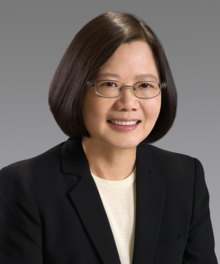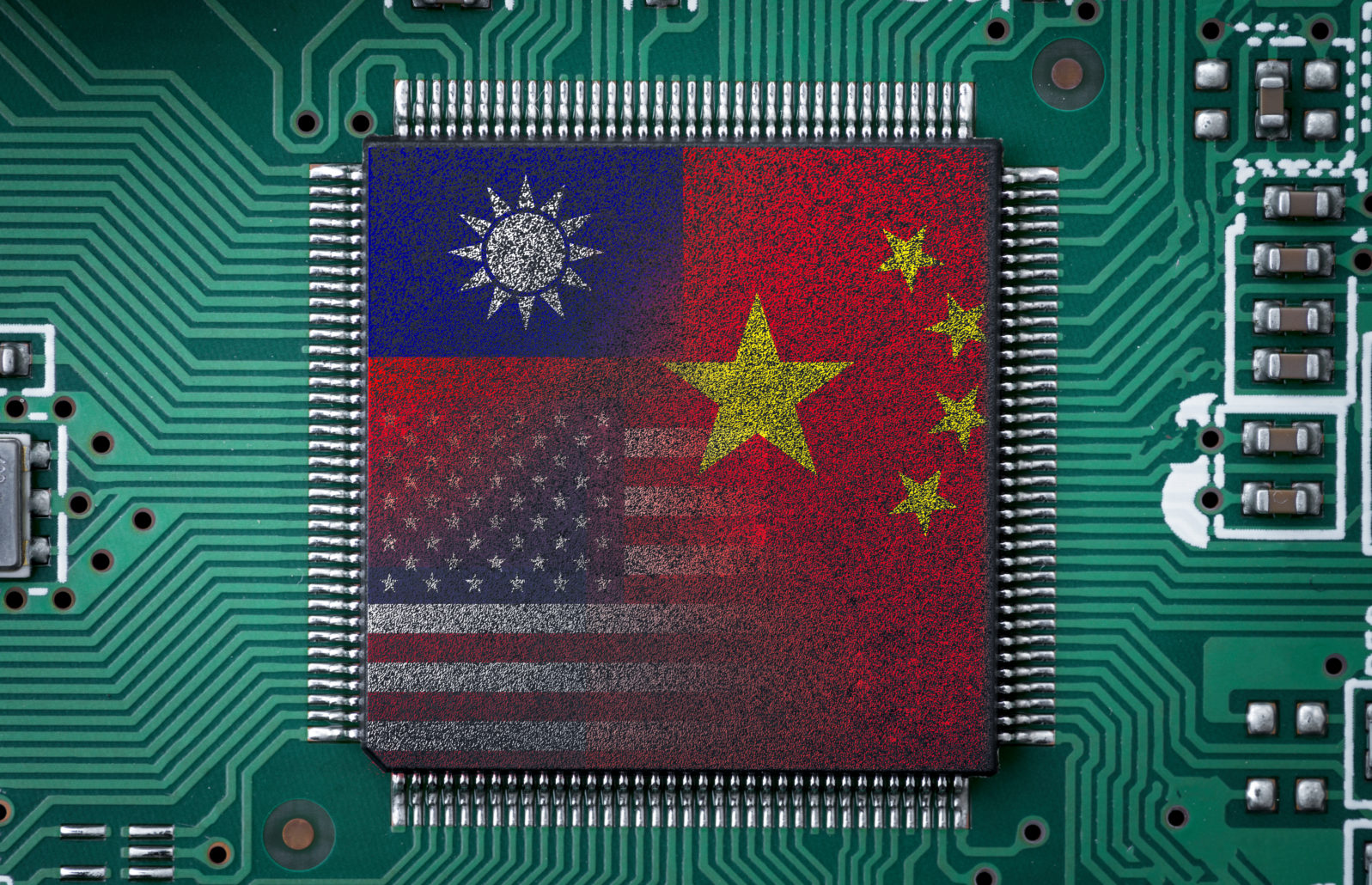Taiwan Has Bet Its Uncertain Future on Advanced Microchips
An increasingly belligerent China has long claimed to own Taiwan, which manufactures 90% of the world’s *advanced* microchipsTaiwan is the world’s largest manufacturer of microchips*, and not just by a small margin. Taiwan manufactures 65% of the microchips used in everything from smartphones to missiles. This compares to the U.S. at 10% and China at 5%. South Korea and Japan produce the rest. More important, Taiwan manufactures 90% of the world’s advanced microchips. In other words, without Taiwan, the world’s supply of microchips would come to a standstill, something that has been keenly felt since 2021 when chip shortages affected the auto industry. So far, the world’s dependence on Taiwan’s chips has protected the self-governing island nation from a potential invasion or ruinous trade sanctions from China.

Earlier, we looked at U.S. House Speaker Nancy Pelosi’s visit to Taiwan. Among the people she met with was Mark Liu, chief executive of Taiwan Semiconductor Manufacturing Corp (TSMC), the world’s largest semiconductor manufacturing company. Mark Liu told Voice of America that a military invasion from China would render TSMC factories inoperable:
“Our interruption would create great economic turmoil in China — suddenly their most advanced component supply disappears. It is an interruption, I must say, so people will think twice on this,” Liu said.
“Nobody can control TSMC by force … because it is a sophisticated manufacturing facility that depends on the real-time connection with the outside world,” such as Europe, the U.S. and Japan, for materials, chemicals and engineering software, he said.
Saibal Dasgupta, “Race for Semiconductors Influences Taiwan Conflict” at VOA (August 10, 2022)
Since Pelosi’s visit, other U.S. lawmakers have also traveled to Taiwan, but garnered much less attention from the Chinese government. Visits to Taiwan are relatively routine for the United States and other trade partners, including Japan, South Korea, Canada, and Europe.
Taiwan’s place of prominence in the semiconductor industry was an intentional investment by its government in the 1980s and plays an important role in Taiwan’s national security.
Semiconductor manufacturer to the world
At the time, the cutting-edge semiconductor technology was 3-micron chips. Now TSMC has plans to begin producing 3nm chips at its facilities in Taiwan. Additionally, it will produce 5nm chips at its new facilities in Arizona. TSMC is already the world’s producer of 7nm chips, necessary for 5G technologies. By way of comparison, Intel, which has been the world leader in microchips, will not be producing 7nm chips until 2023.
Taiwan transitioned from a military dictatorship to a democratic government in 1987, the same year that the Taiwanese government — in a joint partnership with private investors — founded the Taiwan Semiconductor Manufacturing Corp. TSMC was one of the first companies to become an “open access foundry” that made chips for other companies.
TSMC, however, is dependent on other companies for chip design and production of the parts used in its foundries. This is a business model known as the “fabless” model, which distributes the three main components of semiconductor production across multiple companies. Fabless models contrast with Integrated device manufacturer (IDM) models, where design, fabrication, and assembly, testing, and packaging are all done by one company. Intel, in the U.S. leads the word in IDM.
The fabless model takes microchip designs from one company (e.g., Apple, Nvidia), and manufactures them at another company (e.g., TSMC, Samsung), and then conducts assembly, testing, and packaging in another venue (e.g., ASE, Amkor). However, other companies feed into this production line. For example, ASML in the Netherlands is the sole provider of extreme UV devices that are needed to make the most advanced microchips. Japan leads the world in wafer production, equipment, and chemicals needed for fabrication.
Notably, Samsung, TSMC, and China’s SMIC are the only companies that are foundries. All other manufactures are IDMs. The U.S., Europe, and Japan have been courting Taiwan’s semiconductor industry to build foundries in their countries to prevent geopolitics from stressing the supply chain.
By dominating the U.S.-developed model of outsourcing chip manufacture, Taiwan “is potentially the most critical single point of failure in the entire semiconductor value chain,” said Jan-Peter Kleinhans, director of the technology and geopolitics project at Berlin-based think tank Stiftung Neue Verantwortung.
Alan Crawford, Jarrell Dillard, Helene Fouquet, and Isabel Reynolds, “The World Is Dangerously Dependent on Taiwan for Semiconductors” at Bloomberg (January 25, 2021)
TSMC: Sacred mountain, protector of the nation

While Chinese media saw Pelosi’s visit as an affront to Beijing’s claims on the island, and U.S. media propagated a narrative of rising tensions and conflict in the South China Sea, Taiwanese people saw Pelosi’s visit as perfectly normal for an independent country that can host lawmakers and diplomats from other countries. China Digital Times compiled several articles, quotes, and tweets from Taiwanese people who felt that Taiwan’s perspective has been largely ignored by the media. Among the articles was an opinion piece by American-Taiwanese journalist Clarissa Wei, who lives in Taipei. She says,
“There’s a jolting disconnect between how the outside world perceives Taiwan (as a potential flashpoint for world war), and how we in Taiwan see Taiwan (our dear home where we live). And part of that disconnect is because the international conversation about Taiwan is filtered through a geopolitical lens and almost always in the context of China…Our lives in Taiwan do not revolve around cross-strait relations.”
Clarissa Wei, “Here’s a Taiwan Chill Pill for Your Pelosi-Induced Anxiety” at CNN (August 3, 2022)
The Taiwanese government has been lauded for its restraint in the face of China’s increasing military presence around the island. The government has said it is willing to defend the island if China invades its territorial waters and has allocated more state funds to the military. But the Taiwanese are confident that their semiconductor industry protects the island from becoming a conflict zone. This means enhancing Taiwan’s semiconductor industry is a matter of national security and part of the impetus behind the island’s recent formation of the Ministry of Digital Affairs.
Taiwan has been courting other like-minded democratic countries, such as the U.S., Japan, and South Korea, to partner with them economically in hopes that this would also support the island militarily:
Taiwan’s president, Tsai Ing-wen, told one group that she saw the island’s tech prowess as a means of shoring up support for its democracy. Calling economic security a “pillar” of national security, she said Taiwan was willing to work with partners to build sustainable supply chains for what she called “democracy chips.”
Paul Mozur, John Liu, and Raymond Zhong, “‘The Eye of the Storm’: Taiwan Is Caught in a Game Over Microchips” at New York Times (August 29, 2022)
Global dependence on Taiwan’s foundries protects the island from military invasion and prompts countries like Japan and the U.S. to conduct joint military drills. The protection offered by Taiwan’s foundries, particularly TSMC, has been referred to as Taiwan’s “silicon shield.”
As Paul Mozur, John Liu, and Raymond Zhong write in the New York Times,
In the event of a military conflagration, Taiwan’s importance to global chip supplies also means the damage to all sides — and to the wider world’s digital infrastructure — is hugely amplified. Not for nothing do people in Taiwan call TSMC their “sacred mountain, protector of the nation.”
Nonetheless, few deny that Taiwan’s centrality in the supply chain makes such considerations a factor, a concept generally referred to as the “silicon shield.” An invasion of Taiwan would mean a form of mutually assured destruction, not necessarily of the world, but for the many modern devices we use and need.
Paul Mozur, John Liu, and Raymond Zhong, “‘The Eye of the Storm’: Taiwan Is Caught in a Game Over Microchips” at New York Times (August 29, 2022)
A note on the history
Beijing has pushed for Taiwan to agree to the “one country, two systems” framework that had described Hong Kong’s position prior to the passage of the National Security Law in 2020, as part of the “reunification of China.” However, historically, Taiwan was never under the rule of the People’s Republic of China. So the Taiwanese do not see this as “reunification” so much as Beijing’s imperialism. For a quick reference on Taiwan’s history, see “Is Taiwan Part of China?” by Michael Rubin AEI, a chapter in an ebook Defending Taiwan, 2022.
*A microchip is made from fabricated semiconductor material, usually silicon. For the purposes of this article, I will use the terms interchangeably.
You may also wish to read: Pelosi’s visit to Taiwan matters to China. And to your computer. China staged an impressive display of military firepower at U.S, lawmaker Nancy Pelosi’s visit Taiwan — prominent in the globally crucial semiconductor “chips” industry. China has strong economic and political motivations for signaling its intentions of pursuing “reunification,” that is, taking over Taiwan and the chips industry. (Heather Zeiger)
